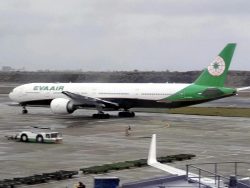14:29 JST, July 8, 2024
The launch of the third H3, Japan’s new large-scale rocket, was a success. It is hoped that Japan will continue to launch the rockets successfully and be able to compete in the global satellite launch market.
The H3 rocket, jointly developed by the Japan Aerospace Exploration Agency and Mitsubishi Heavy Industries, Ltd., will take over the soon-to-be retired H2A to become the mainstay launch vehicle. The first launch in March last year ended in failure, but the launch of the second H3 in February was a success.
The latest marked the second consecutive successful launch. In order to make up for the slow start and compete with foreign competitors, it is essential to ensure the success of the fourth and fifth H3 rockets, which are both scheduled to be launched this fiscal year.
The Daichi-3 land observation satellite was lost in the failed first launch, and the second H3 launch did not carry a large satellite. In the most recent launch, the Daichi-4 was placed into orbit. It is significant that the satellite has made it possible to observe damage from earthquakes, torrential rains and other disasters on a wider scale.
The government plans to launch satellites for defense communications and for the Michibiki quasi-zenith satellite system, which is called the Japanese version of GPS, with H3 rockets. There will also be missions to send probes to the moon and to Mars’ moons.
In order to carry out these important national projects as planned, establishing reliable H3 launches is required.
The use of satellites is increasing in many countries. Meanwhile, competition among Japan, the United States and Europe for receiving orders has intensified as Russia’s aggression toward Ukraine has made it difficult to place launch orders with Russia.
Currently, the U.S. company SpaceX has a dominant position. It launches dozens of rockets a year and boasts advanced technologies, including reusable rockets that return to the ground after launch intact.
The H3 reduces the cost of a launch to ¥5 billion, about half the cost of the H2A. Price competitiveness should be strengthened, and reliability should be improved through accurate launches so H3 can earn the No. 2 position behind SpaceX’s rockets.
In addition to large satellites, demand is increasing for a large number of smaller satellites to be placed in orbit for communications and observations. It is essential to have a system that can handle a variety of commercial satellite launches, combining not only the H3, which the government led the development of, but also smaller rockets.
However, space development by the private sector in Japan cannot be said to be strong, as shown by the failure of the first launch of a small rocket by the Japanese space startup Space One Co. in March.
The government has established a ¥1 trillion Space Strategy Fund with JAXA. It is necessary to use this fund and other financial sources to encourage startups and establish a public-private framework for technological development.
(From The Yomiuri Shimbun, July 8, 2024)
"Editorial & Columns" POPULAR ARTICLE
-

Artificial Intelligence Expands Possibilities for Foreign Language Learners
-

Build Intellectual, Physical Strength, As Well As Communicative Power / Japan Should Move from Beneficiary to Shaper of World Order
-

Global Economy in Turmoil: Prevent Free Trade System from Going Adrift / Risks to Financial Markets Must Be Heeded
-

Japan-China Strain Set to Persist as Beijing Officials Self-Interestedly Bash Tokyo; Takaichi Unlikely to Back Down
-

Elderly People Living Alone: What Should be Done to Ensure Living with Peace of Mind until the End?
JN ACCESS RANKING
-

Japan Govt Adopts Measures to Curb Mega Solar Power Plant Projects Amid Environmental Concerns
-

Core Inflation in Tokyo Slows in December but Stays above BOJ Target
-

Major Japan Firms’ Average Winter Bonus Tops ¥1 Mil.
-

Bank of Japan Considered U.S. Tariffs, Coming Shunto Wage Hike Talks in Its Decision to Raise Interest Rates
-

Tokyo Zoo Wolf Believed to Have Used Vegetation Growing on Wall to Climb, Escape; Animal Living Happily after Recapture




























